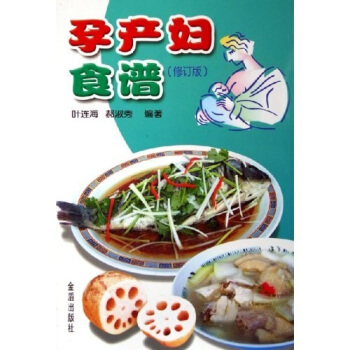

具体描述
| 图书基本信息 | |||
| 图书名称 | 气液两相流动和沸腾传热 | 作者 | 孙立成,王建军 |
| 定价 | 32.00元 | 出版社 | 国防工业出版社 |
| ISBN | 9787118094312 | 出版日期 | 2014-06-01 |
| 字数 | 194000 | 页码 | 168 |
| 版次 | 1 | 装帧 | 平装 |
| 开本 | 16开 | 商品重量 | 0.4Kg |
| 内容简介 | |
《气液两相流动和沸腾传热》涵盖了气液两相流动的全部基础内容,包括两相流动学科的发展历程、研究方法;两相流动的基本参数;两相流动的流型和判定方法;两相流动压降的计算;气液两相临界流动;两相流动不稳定性;沸腾传热介绍;过冷沸腾时空泡份额和压降的计算;两相流动中常用的测量方法。 |
| 作者简介 | |
| 目录 | |
Chapter 1 Introduction 1.1 What is Two-Phase Flow 1.2 Methods of Analysis 1.3 NotationChapter 2 Flow Pattern and Flow Pattern Map 2.1 Introduction 2.2 Flow Patterns in Vertical Flows 2.2.1 Flow patterns in vertical co-current flow 2.2.2 Flow patterns in vertical heated channels 2.3 Flow Patterns in Horizontal Flows 2.3.1 Flow patterns in horizontal co-current flow 2.3.2 Flow patterns in horizontal heated channel 2.4 Flow Pattern Maps and Transitions 2.4.1 Typical flow pattern maps 2.4.2 Criteria for flow pattern transitions 2.5 Flow Patterns in Other ApplicationsChapter 3 Basic Models 3.1 Introduction 3.2 Drift Flux Model 3.3 Two-Fluid Model 3.4 Homogeneous Model 3.4.1 Conservation of mass 3.4.2 Conservation of momentum 3.4.3 Conservation of energy 3.5 Separated Flow Model 3.6 OverviewChapter 4 Empirical Methods for Pressure Drop 4.1 Introduction 4.2 Correlations Based on the Homogeneous Model 4.3 Correlations Based on the Separated Flow Model 4.3.1 Correlations from momentum balance 4.3.2 Use of model to evaluate pressure loss 4.3.3 Determination of the two-phase multiplier 4.4 Pressure Losses Through Enlargements,Contractions,Orifices, Bends, and Valves 4.4.1 Sudden enlargement 4.4.2 Sudden contraction 4.4.3 Orifices 4.5 Annular Flow 4.6 Void Fraction 4.6.1 Homogeneous model 4.6.2 Drift-flux model 4.6.3 The Bankoff variable density model 4.6.4 The Hughmark correlation 4.7 ConclusionsChapter 5 Two-Phase Critical Flow 5.1 Introduction 5.2 Theoretical Foundations 5.3 Critical Flow in Long Pipes 5.4 Critical Flow in Short Pipes, Nozzles and Orifices 5.5 Propagation of Pressure Pulses and WavesChapter 6 Introduction to Hydrodynamic Instability 6.1 Introduction 6.2 Classifications of Two-Phase Flow Instabilities 6.3 Physical Mechanisms of Static Instabilities 6.3.1 Fundamental static instability 6.3.2 Fundamental relaxation instability 6.3.3 Compound relaxationinstability 6.4 Physical Mechanisms of Dynamic Instabilities 6.4.1 Fundamental dynamic instability 6.4.2 Acoustic instability 6.4.3 Density-wave oscillations 6.4.4 Pressure-drop oscillations 6.4.5 Condensing instability 6.4.6 Thermal oscillations 6.4.7 Boiling water reactor instability 6.4.8 Parallel channel instability 6.5 Approaches in Two-Phase Flow Stability Analysis 6.5.1 Direct numerical analysis 6.5.2 Frequency-domain analysis 6.6 Situations Where Instability Arise 6.7 The Designer's Requirements 6.8 Problems Arising in the Application of Models and Tests to DesignsChapter 7 Introduction to Nucleation in Boiling 7.1 Vapor-Liquid Equilibrium 7.1.1 Equilibrium criterion 7.1.2 P-u-T diagram 7.1.3 Equation of state 7.1.4 Metastable state 7.1.5 Clausius-Clapeyron equation 7.1.6 Thermodynamic equilibrium at a curved interface 7.2 Homogeneous Nucleation 7.2.1 Equilibrium condition for a embryo bubble 7.2.2 Mechanism of nucleation 7.3 Heterogeneous Nucleation 7.3.1 Contact angle and wettability 7.3.2 Nucleation at solid surfaces 7.3.3 Nucleation from entrapped gas or vapor in cavities 7.3.4 Size Range of Active Nucleation Sites 7.4 Bubble Dynamics 7.4.1 Bubble growth in an extensive liquid pool 7.4.2 Bubble growth near heated surfaces 7.4.3 Diameter and frequency of Bubble departureChapter 8 Pool Boiling 8.1 Nukiyama Boiling Curve 8.2 Regimes of Pool Boiling 8.3 Nucleate Boiling 8.3.1 Inception of boiling (Onset of Nucleate Boiling) 8.3.2 Heat transfer mechanisms in nucleate boiling 8.3.3 Nucleate Pool Boiling Correlations 8.4 Departure From Nucleate Pool Boiling 8.4.1 Transitional boiling regime and Taylor instability 8.4.2 Helmholtz instability of vapor jets 8.4.3 Prediction of critical heat flux 8.5 Film Boiling 8.6 Minimum Heat FluxChapter 9 Flow Boiling 9.1 Regimes of Convective Boiling in Tubes 9.2 Onset of Boiling in Internal Flows 9.3 Subcooled Flow Boiling 9.3.1 Regimes of subcooled flow boiling 9.3.2 Methods of predicting partial subcooled flow boiling heat transfer 9.3.3 Void fraction and pressure drop in subcooled boiling 9.4 Saturated Flow Boiling 9.4.1 Regimes of saturated flow boiling 9.4.2 Heat transfer correlations for saturated flow boiling 9.5 Critical Heat Flux in Flow Boiling 9.5.1 Mechanisms 9.5.2 Prediction of CHF in flow boilingReFerences |
| 编辑推荐 | |
| 文摘 | |
| 序言 | |
用户评价
说实话,我之前对食疗的认知非常有限,总觉得那些养生书籍要么过于专业,要么就是些“土方子”。但这本书的出现,彻底颠覆了我的看法。它的内容非常全面,从基础的“煲汤泡酒煮粥沏茶”这些最家常的做法,到针对具体病症的“对症食疗祛百病”,再到更深层次的“药膳保健养生”,几乎涵盖了食疗的方方面面。最让我印象深刻的是,它结合了“黄帝内经”的智慧,让食疗不再是单纯的“吃什么”,而是包含了中医辨证施治的理念。书中的“食疗食谱”部分,每一道菜肴都经过精心设计,不仅有疗效,而且味道也考虑到了,这大大提升了食疗的可执行性。我尝试了几道书中推荐的食谱,发现确实对身体有积极的改善。而且,书中的“彩色图解”让整个阅读过程变得生动有趣,不再是干巴巴的文字,而是图文并茂,视觉效果非常好,让人一看就明白。这本书确实是值得推荐给所有追求健康生活方式的人。
评分最近我一直在探索如何通过更自然、更温和的方式来调理身体,这本书简直就是及时雨。它不像市面上很多养生书籍那样,一会儿强调这个食材的神奇功效,一会儿又宣扬另一种疗法有多么高效。《百病食疗大全》的处理方式非常稳健,它循序渐进,从最基础的“煲汤煮粥”这些家庭常客,讲到更复杂的“药膳保健”,并且将“黄帝内经”的精髓贯穿其中,让人在不知不觉中领悟到中医的博大精深。最令我赞赏的是,书里并没有夸大其词,而是强调“对症食疗”,让读者能够清晰地了解每种方法适合什么样的人群,解决什么样的问题。那些“食谱”的设计非常人性化,既考虑到了疗效,也兼顾了美味,让我不再因为“为了养生而牺牲口感”而犹豫。而且,书中的“彩色图解”让整个阅读体验非常愉悦,那些清晰的图片帮助我更好地辨认食材,也为我的厨房增添了不少灵感。这本书绝对是想从根本上改善身体状况、提升生活品质的读者的不二之选。
评分我一直对“药食同源”这个概念很着迷,总觉得中国传统医学在这方面有着深厚的智慧。这次偶然翻到了这本《百病食疗大全》,更是让我对这种古老的疗法有了全新的认识。书里不仅仅是简单列举食材和功效,而是将“黄帝内经”的精髓融入其中,用现代人容易理解的语言和视角去解读。它详细解释了为何某些食物能治病,背后的中医理论是什么,这让我不再是盲目地尝试,而是更加理解和信任食疗的力量。书中关于“保健养生”的部分尤其吸引我,它不仅仅局限于治疗疾病,更注重日常的预防和调理,教我们如何通过饮食来增强体质,延缓衰老,保持健康活力。那些“食谱”更是实用得不得了,每道菜都有详细的步骤和配料,即使是厨房新手也能轻松上手。而且,它还根据不同的季节和体质提供了个性化的建议,这一点做得非常到位。感觉这本书不仅仅是一本食疗手册,更像是一位经验丰富的中医名家在循循善诱,引导我们走上一条更健康的生活道路。
评分这本《百病食疗大全》简直是我家厨房里的“神灯”!一直以来,我都对中医食疗很感兴趣,但总觉得有些理论高深莫测,实践起来也摸不着头脑。直到我遇到了这本书,才算是找到了真正的“宝藏”。它不像那些枯燥乏味的医学典籍,而是用非常接地气的方式,将复杂的食疗原理娓娓道来。每一种病症,它都会详细介绍其成因、症状,然后给出切实可行的食疗方案。最让我惊喜的是,书里提供的食疗方法都非常注重食材的搭配和烹饪方式,比如煲汤、泡酒、煮粥、沏茶,这些都是我们日常生活中最常见的烹饪方式,学起来毫不费力。而且,它还特别强调了“对症食疗”,这意味着不是泛泛而谈,而是针对性地解决问题,这一点对于像我这样有特定健康困扰的人来说,简直是太重要了。书里的彩图更是锦上添花,精美的插图不仅让菜肴看起来更诱人,也帮助我更直观地了解食材的形态,增强了实践的信心。这本绝对是想要通过饮食改善健康、提升生活品质的家庭必备指南。
评分作为一名对传统文化和养生之道充满好奇的读者,我一直致力于寻找能够真正理解和实践这些智慧的媒介。《百病食疗大全》这本书,正是我一直期待的那一本。它并没有回避“黄帝内经”这样经典理论的晦涩之处,反而巧妙地将其融入到日常的食疗实践中,让古老的智慧焕发出生机。我特别喜欢书里对于“泡酒”和“沏茶”这两种养生方式的详细介绍,它们不仅是饮品,更蕴含着独特的养生哲学。书中的“对症食疗”部分,条理清晰,针对性强,让我能够根据自己和家人的具体情况,找到合适的食疗方案。更难得的是,它提供的“食谱”都非常具体,从食材的选取到烹饪的火候,都讲解得细致入微,完全可以照搬照抄。那些精美的“彩色图解”更是让人赏心悦目,仿佛置身于一个充满生机和智慧的养生园林。这本书不仅仅是一本工具书,更是一份通往健康生活的引路图。
评分质量可以,字体也很清晰
评分好书~~值得信赖
评分图文并茂
评分养生好书,比电脑看着方便
评分很好看
评分简直是想查什么就能在目录翻到,而且类容不枯燥,彩色的很有吸引力,很是喜欢
评分有用的书籍 不错了
评分应该会很有用!书有压角的地方,不过还好!
评分很好看
相关图书
本站所有内容均为互联网搜索引擎提供的公开搜索信息,本站不存储任何数据与内容,任何内容与数据均与本站无关,如有需要请联系相关搜索引擎包括但不限于百度,google,bing,sogou 等
© 2025 book.tinynews.org All Rights Reserved. 静思书屋 版权所有









![景丽自然瑜伽(附光盘) [Jingli Nature Yoga] pdf epub mobi 电子书 下载](https://pic.tinynews.org/10241712/573c1d73N6f38f96e.jpg)










